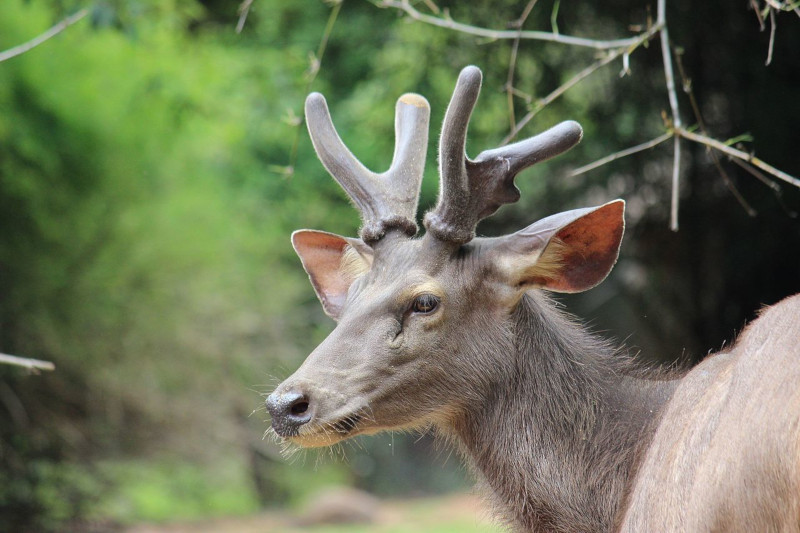
Sangai Facts
- The short and surprisingly simple term of Sangai serves as one of the common names for a subspecies of brown-antlered deer. As is the case with many species, however, this gorgeous mammal also goes by a few other common, locally used names.
- To be precise, three terms stand out, in addition to the generally accepted one. These alternate terms include those of the dancing deer, Eld’s Deer, and the Manipur brown-antlered deer. Its scientific name, however, remains the term of Rucervus eldii eldii.
- Even local residents had rarely seen it previously. The first recognition of this amazing creature by a non-native of its region occurred in the year 1838. Lt. Eldi Percy, an assistant political agent, made the initial recognition of the fabulous deer.
- One of the alternate names of the Sangai honors him for that well-deserved recognition. The first acknowledgement of the impressive animal as a member of a newly-recognized species in a scientific publication occurred in 1841.
- Unfortunately, the magnificent Sangai now also finds itself in a highly perilous situation. This occurs due to the facts that it has only a small population, and a highly restricted range. For these reasons, the IUCN now lists the species as Endangered.
- Consequently, this status appears on the organization’s Red List of Threatened Species. Although habitat loss definitely constitutes a danger, it nonetheless must deal with other threats. Likely, its greatest threat comes from climate change.
Related Articles
Sangai Physical Description
The Sangai also remains an impressive species. Tt does not earn this distinction based on size, though. In terms of measurements, it ranks as a medium-sized variety of deer. Like many related species, it also displays a respectable degree of the trait of sexual dimorphism.
It manifests these in three ways. Firstly, only the males possess antlers. This applies to all types of deer, except for the Reindeer. Secondly, the males attain a slightly greater height at the shoulder than females. Thirdly, the males reach a greater weight than the females.
Both genders display a reddish brown color in winter. This turns lighter in summer. Males average 45.3 – 51 in (115- 130 cm) in height, and 198 – 275 lb (90 – 125 kg) in weight. But females average 35.4 – 39.4 in (90 – 100 cm) in height, and 132 – 176 lb (60 – 80 kg) in weight.
- Kingdom: Animalia
- Phylum: Chordata
- Class: Mammalia
- Order: Artiodactyla
- Family: Cervidae
- Genus: Rucervus
- Species: R. e. eldii
Sangai Distribution, Habitat, and Ecology
The Sangai inhabits an extraordinarily limited area of the world. The creature also appears in a restricted section of Asia. More specifically, though, the remarkably stunning animal only lives in the region on the southeastern shore of Loktak Lake, in India.
Within this range, the creature has specific needs for its choice of habitat. The mammal also only lives on and around the floating biomass, called phumdi, unique to this area. Fortunately, the entirety of this region now forms part of the Keibul Lamjao National Park.
Quite understandably, the minor size of its habitation area limits its options. The entire park only covers an area of roughly 15.4 sq mi (40 sq km). Yet, the fabulous animal itself only dwells within a portion of this, in an area only covering about half the total area of the park.
This regrettable further restriction occurs given its dependence on the phumdis. Sadly, these plants only appear in this area. Here, the Sangai lives an entirely herbivorous life. It feeds on a variety of local grasses, herbaceous plants, and various roots.
By day, the great majority of individuals generally rest under tall reeds and grasses. Before the enactment of various protective measures, the gorgeous animal nearly became extinct. Now, its numbers have thankfully risen to an estimated 260 individuals.
Species Sharing Its Range
Check out our other articles on 4 Stunning South American Woody Shrubs, Giant Oarfish, Whitehaven Beach, Lange’s Metalmark Butterfly, Flatback Sea Turtle, Dove Tree, Maned Wolf
